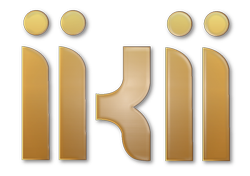Research Article
Fostering Creative Thinking Through Immersive Virtual Reality Environments in Education
More Detail
1 INTI International University* Corresponding Author
Educational Innovations and Emerging Technologies, 4(3), 2024, 8-25, https://doi.org/10.35745/eiet2024v04.03.0002
Published: 12 November 2024
OPEN ACCESS 721 Views 385 Downloads
ABSTRACT
The integration of Virtual Reality (VR) in educational settings offers a powerful tool to foster creative thinking by immersing students in interactive, 3D environments that go beyond traditional learning methods. This paper explores how immersive VR environments can enhance creativity, focusing on key aspects such as sensory engagement, interactivity, and experiential learning. By providing rich sensory stimulation (visual, auditory, and haptic feedback) and enabling risk-free experimentation, VR encourages students to think divergently, solve problems creatively, and engage deeply with content. The study examines the impact of VR on creativity using mixed-method approaches, including pre- and post-assessments of creativity through the Torrance Tests of Creative Thinking (TTCT) and qualitative feedback from students and educators. Results indicate significant improvements in creative fluency, originality, and flexibility among students exposed to VR learning environments. The paper further discusses the technological infrastructure required for VR integration, as well as the challenges of accessibility and scalability. The findings support VR as a transformative tool in education, capable of promoting creative exploration and enhancing cognitive engagement in learners.
CITATION (APA)
Leong, W. Y. (2024). Fostering Creative Thinking Through Immersive Virtual Reality Environments in Education. Educational Innovations and Emerging Technologies, 4(3), 8-25. https://doi.org/10.35745/eiet2024v04.03.0002
REFERENCES
- Bailenson, J. (2018). Experience on Demand: What Virtual Reality Is, How It Works, and What It Can Do. W. W. Norton & Company.
- Bailey, L, Thompson, H, & Miller, R. (2021). Virtual Lab Simulations and Creative Problem-Solving in Science Education. Journal of Science Education, 29(3), 345–362.
- Brown, A, & Thompson, H. (2019). Comparing VR and Traditional Methods in Enhancing Creativity in Classrooms. Educational Psychology Review, 32(4), 521–536.
- Brown, A., & Williams, H. (2019). Barriers to the Adoption of Virtual Reality in Education. Educational Technology Review, 15(3), 189–202.
- Clark, R. C., & Mayer, R. E. (2016). E-Learning and the Science of Instruction: Proven Guidelines for Consumers and Designers of Multimedia Learning. Wiley.
- Csikszentmihalyi, M. (1996). Creativity: Flow and the Psychology of Discovery and Invention. HarperCollins.
- Guilford, J. P. (1950). Creativity. American Psychologist, 5, 444–454.
- Johnson, T, Smith, R, & Lee, K. (2020). Virtual Reality in Education: Enhancing Learning Outcomes through Immersion. Journal of Educational Technology, 18(2), 245–259.
- Johnson, T., Smith, R., & Lee, K. (2020). Virtual Reality in Education: Enhancing Learning Outcomes through Immersion. Journal of Educational Technology, 18(2), 245–259.
- Kolb, D. A. (1984). Experiential Learning: Experience as the Source of Learning and Development. Prentice Hall.
- Lee, W, Liu, W, Chong, P. H, Tay, B. L, & Leong, W.Y. (2009). Design of Applications on Ultra-Wideband Real-Time Locating System. 2009 IEEE. In ASME International Conference on Advanced Intelligent Mechatronics.
- Leong, W.Y, and Kumar, R. (2023b). 5G Intelligent Transportation Systems for Smart Cities. In Convergence of IoT, Blockchain, and Computational Intelligence in Smart Cities, pp. 1–25. CRC Press.
- Leong, W.Y, Homer, J. (2005). EKENS: A learning on nonlinear blindly mixed signals. In Proceedings.(ICASSP'05). IEEE International Conference on Acoustics, Speech, and Signal Processing, 2005. 2005 Mar 23, Vol. 4, pp. iv-81. IEEE.
- Leong, W.Y, James Ee, (2012). A warehouse management system for 3 dimensional tracking and positioning, Applied Mechanics and Materials 152 (2012): 1685–1690.
- Leong, W.Y, Leong, Y.Z, & Leong, W.S. (2024b).Virtual Reality on Creative Learning, ICT & Knowledge Engineering, 20–22 NOV, 2024, Bangkok, Thailand, 2024.
- Leong, W.Y, Leong, Y.Z, Leong, W.S. (2023a). Virtual reality in education: case studies and applications, IET Conference Proceedings, 2023, pp. 186–187, DOI: 10.1049/icp.2023.3332
- Leong, W.Y, Leong, Y.Z, Leong, W.S. (2024a). Virtual Reality in Green Construction, Applying new Technology in Green Buildings, ATiGB, Da Nang, AUG 2024.
- Leong, W. Y., Leong, Y. Z., & Leong, W.S. (2024c). Engaging SDGs Agenda into a Design Thinking Module. Educational Innovations and Emerging Technologies, 4(2), 1–7.
- Mayer, R. E., & Moreno, R. (2017). Learning from Virtual Worlds: Cognitive, Motivational, and Social Factors. Educational Technology Research and Development, 65(5), 593-606.
- Miller, D. (2020). Barriers to VR Adoption in Classrooms. Technology and Education Journal, 12(1), 55–70.
- Rizzo, A, Schultheis, M, & Rothbaum, B. (2018). Virtual Storytelling for Narrative Creativity in Education. Interactive Learning environment, 26(1), 123–139.
- Smith, J, & Lee, K. (2019). Creative Expressions through Google Tilt Brush: A New Canvas for Learning. Art Education Journal, 45(2), 134–146.
- Smith, R, Johnson, T, & Thompson, H. (2022). Long-Term Impacts of VR in Education: A Review. Educational Research Review, 38, 100456.
- Williams, P, & Brown, A. (2020). The Digital Divide and VR Access in Education. Journal of Digital Equity, 15(4), 299–312.

 OPEN ACCESS
OPEN ACCESS

 The articles published in this journal are licensed under the CC-BY Creative Commons Attribution International License.
The articles published in this journal are licensed under the CC-BY Creative Commons Attribution International License.